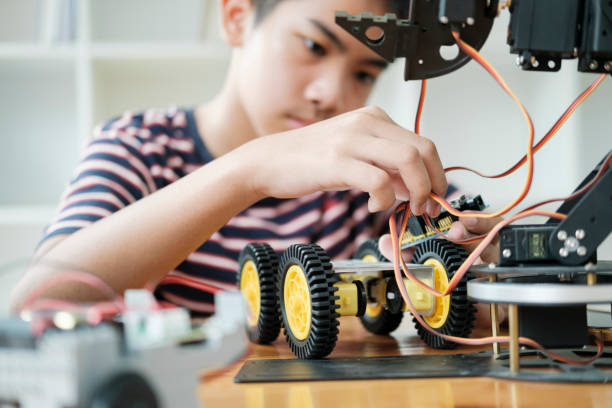In today's digital age, harnessing the power of social media in the classroom can transform the learning experience. Teachers can leverage these platforms to engage students, promote collaboration, and enhance educational outcomes. This article explores the effective use of social media in education, highlighting its benefits, potential challenges, and best practices for implementation.
Introduction:
Social media, once primarily seen as a platform for personal communication, has evolved into a powerful tool for educational purposes. The integration of social media into the classroom can open up new avenues for learning, providing students with a dynamic and interactive educational experience.
Benefits of Social Media in Education:
Enhanced Communication:
Social media facilitates instant communication between students and teachers. Platforms like Twitter and Facebook enable real-time interaction, making it easier for educators to share updates, resources, and important information.
Collaborative Learning:
Social media platforms encourage collaboration among students. Tools like Google Drive, for instance, allow students to work on projects simultaneously, promoting teamwork and collective problem-solving.
Increased Engagement:
The interactive nature of social media captures students' attention. Integrating educational content into platforms they already use can make learning more enjoyable and relevant, increasing overall engagement.
Global Learning Opportunities:
Social media breaks down geographical barriers, connecting students with peers and experts from around the world. This global perspective enriches learning experiences by exposing students to diverse cultures and ideas.
Resource Sharing:
Platforms such as Pinterest and Instagram can be utilized for sharing educational resources. Teachers can curate content, share study materials, and recommend useful resources to enhance the learning process.
Challenges of Social Media in Education:
Distractions:
One of the main concerns of integrating social media into the classroom is the potential for distractions. Students may be tempted to use these platforms for non-educational purposes during class time.
Privacy Concerns:
Protecting students' privacy is crucial. Teachers need to establish clear guidelines on what is appropriate to share online and ensure that students are aware of the potential risks associated with social media use.
Inequality in Access:
Not all students may have equal access to social media platforms or the internet. This digital divide can create disparities in learning experiences and opportunities.
Cyberbullying:
The online environment, if not properly monitored, can give rise to cyberbullying issues. Educators must be vigilant in fostering a positive and respectful online culture.
Reliability of Information:
Students need to be taught how to critically evaluate information found on social media. Not all content is accurate or reliable, and promoting media literacy is essential in navigating the vast sea of online information.
Best Practices for Implementing Social Media in the Classroom:
Establish Clear Guidelines:
Teachers should set clear guidelines on the purpose and acceptable use of social media in the classroom. This includes outlining expectations, defining appropriate behavior, and addressing potential consequences for misuse.
Promote Digital Literacy:
Integrating social media into the curriculum provides an opportunity to teach digital literacy skills. Educators can guide students on how to critically assess information, verify sources, and navigate the online landscape responsibly.
Use Dedicated Educational Platforms:
Consider using platforms specifically designed for educational purposes, such as Edmodo or Schoology. These platforms are tailored for the classroom environment and offer features that prioritize educational content.
Encourage Student Participation:
Foster a collaborative environment by encouraging students to actively contribute to discussions, share insights, and collaborate on projects. This promotes a sense of community and engagement.
Regularly Assess Impact:
Evaluate the effectiveness of incorporating social media into the curriculum. Collect feedback from students, analyze engagement metrics, and adjust strategies accordingly to maximize the benefits of these tools.
Real-Life Examples of Social Media in Education:
Twitter for Classroom Updates:
Teachers can use Twitter to provide real-time updates, share relevant articles, and create class-specific hashtags for discussions. This microblogging platform enhances communication and keeps students informed.
Blogs for Reflective Writing:
Blogging platforms like WordPress or Blogger can be used for reflective writing assignments. Students can share their thoughts on class topics, creating a digital portfolio of their learning journey.
YouTube for Educational Videos:
Teachers can curate or create educational videos and share them on YouTube. This visual medium can be a powerful tool for explaining complex concepts and engaging students through multimedia content.
Collaborative Document Editing with Google Docs:
Google Docs allows students to collaborate in real-time on shared documents. Whether it's group projects, peer editing, or collaborative note-taking, this tool promotes teamwork and enhances productivity.
Virtual Field Trips via Instagram or Facebook Live:
Bring the world into the classroom by using Instagram or Facebook Live for virtual field trips. Experts or educators can broadcast live sessions, providing students with interactive learning experiences beyond the physical classroom.
Conclusion:
Effectively integrating social media into the classroom can revolutionize the way students learn and interact with educational content. By embracing the benefits, addressing challenges, and implementing best practices, educators can create a dynamic and engaging learning environment that prepares students for the digital world they will navigate in their future careers.









